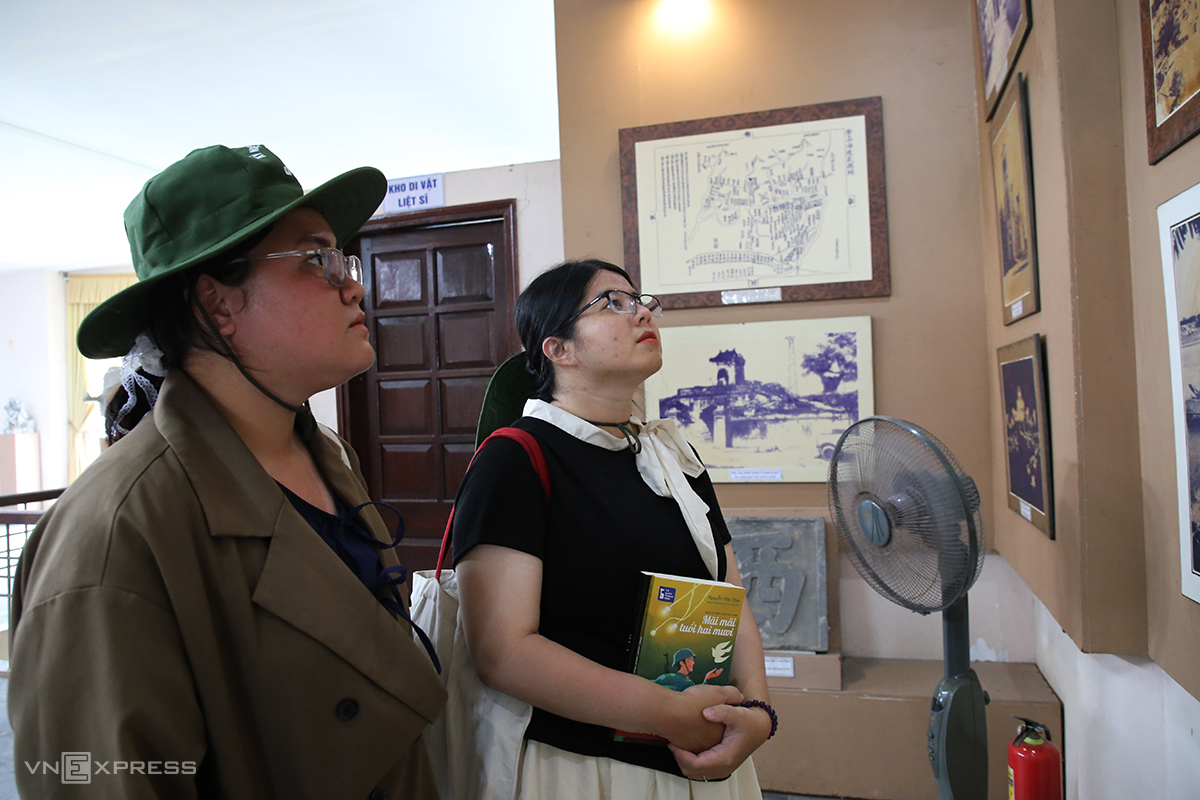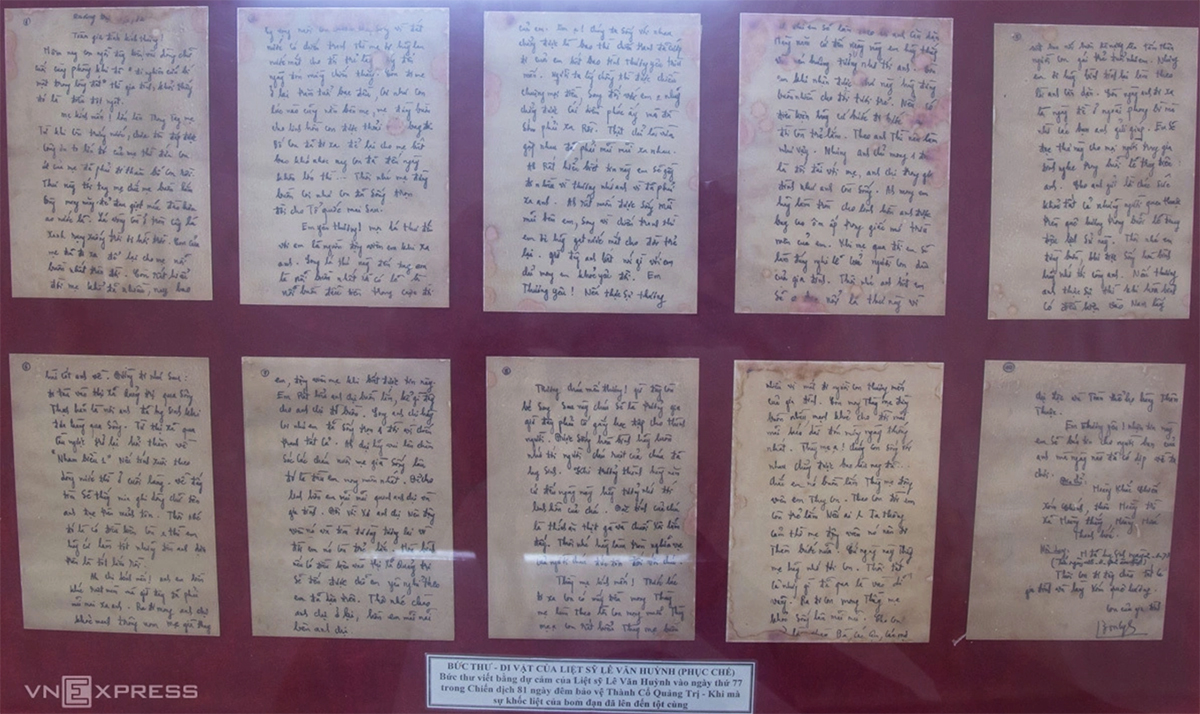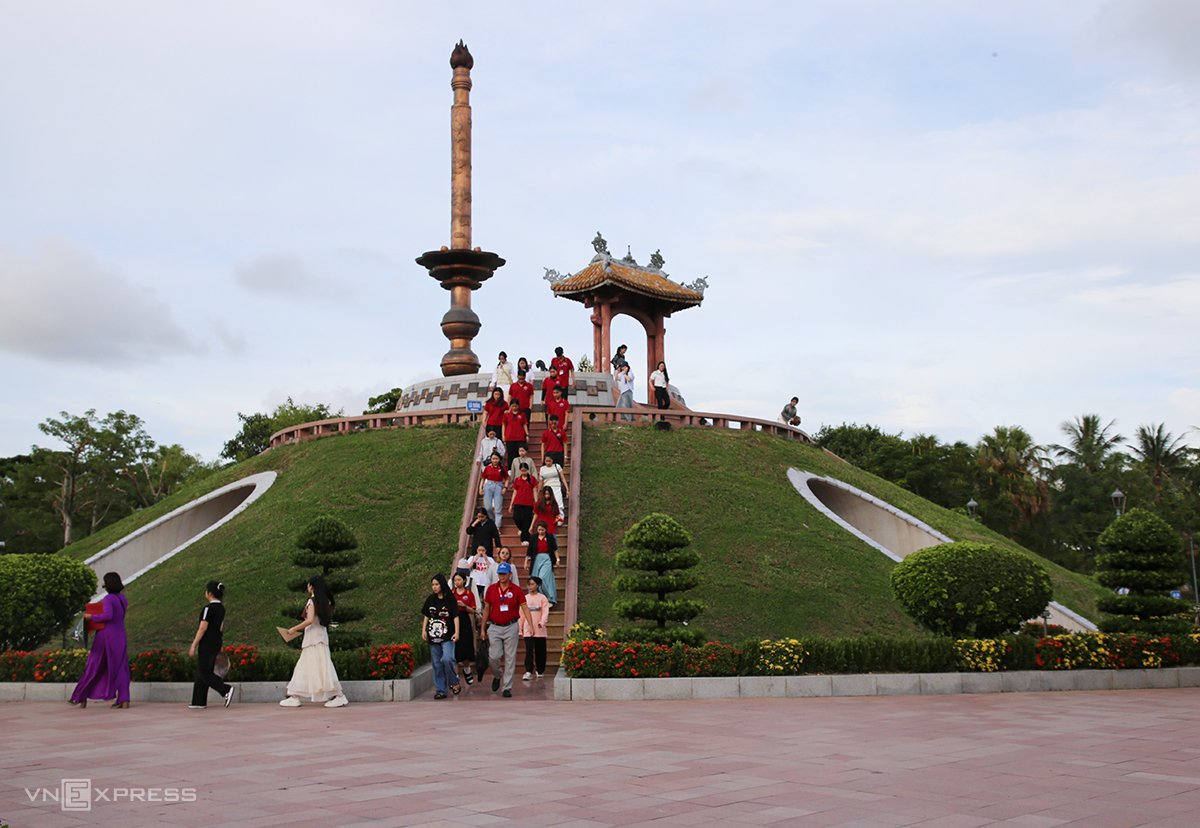After watching the film "Mua do" (Red Rain), Huynh Ngoc Truc, 27, from Ho Chi Minh City, altered her Hue travel plans to visit the Quang Tri Citadel. Originally planning a three-day trip to Hue with a friend in mid-September, the film, depicting the 81-day battle to defend the citadel, deeply moved her. "The two-hour film showed me the sacrifices made by previous generations to protect the citadel and Quang Tri town. I felt compelled to visit," she explained.
Truc and her friend rented a motorbike and traveled 60 km from Hue to the citadel. While aware the landscape depicted in the film had changed, she still wanted to experience the historical site firsthand. She was shocked to learn that the total amount of bombs dropped by American and South Vietnamese forces on the citadel and Quang Tri town (over 3 km2) during the 81-day battle was equivalent to seven atomic bombs.
Truc studied the dozens of photos showcasing the citadel 53 years ago. The square structure, with each side measuring 2,160 m and walls averaging 4.3 m high, had walls over 12 m thick at the base and 0.7 m at the top. Now, only fragments remain. The once cratered land, littered with bomb and shell holes and ruined buildings, now shows little evidence of the devastation, save for the still-standing Bo De school.
 |
Huynh Ngoc Truc (right) and Le Thuy Ngoc Tram visit the citadel museum. Photo: Dac Thanh |
Truc's friend, Le Thuy Ngoc Tram, 25, was moved by the letter written by martyr Le Van Huynh (from Kien Xuong district, the former Thai Binh province) displayed at the Quang Tri Citadel Museum. In the 10-page letter to his mother, wife, and relatives, Huynh expressed his premonition of it being his last. He apologized for not fulfilling his duties as a son and husband, but affirmed he had "lived his life fully for the nation." He also requested his future nephew to offer him sticky rice with chicken.
"After spending half a day exploring the citadel and the Thach Han River, I realized the war was even more brutal than portrayed in 'Mua do'. An entire generation sacrificed everything to defend every inch of land," Tram shared, adding that Quang Tri will be her next destination when she travels to central Vietnam.
 |
The letter of martyr Le Van Huynh displayed at the Quang Tri Citadel. Photo: Dac Thanh |
Nguyen Thanh Hoan, 27, from Hanoi, diverted his trip from Da Nang to the Quang Tri Citadel. During his hour-long visit, he examined the photos, artifacts, and documents at the citadel museum. The land, once ravaged by bombs, is now largely recovered. After 53 years, most of the bomb craters have been filled, replaced by lush greenery and high-rise buildings.
"Visiting the battleground, seeing the remnants, and viewing the photos helped me understand that peace is not free. It came at the cost of countless lives," Hoan reflected. He added that the experience instilled a sense of responsibility towards himself, his family, and society.
 |
Young people offer incense to honor fallen soldiers at the citadel memorial. Photo: Dac Thanh |
Cap Thi Thien Trang, head of the Management Board of the Le Duan Memorial Site and Quang Tri Citadel, reported that in August 2025, 16,875 visitors came to the citadel, a 27% increase compared to the same period last year.
While visitors usually pay their respects in July, fewer come during National Day. However, this year, the film "Mua do" significantly boosted visitor numbers. From August 30 to September 2, nearly 10,000 visitors came to the site, with a record 3,800 visitors on September 2, far surpassing previous holidays.
"Many people, after watching the film, feel compelled to visit the citadel and offer incense to honor the fallen soldiers," Trang stated.
Dac Thanh












